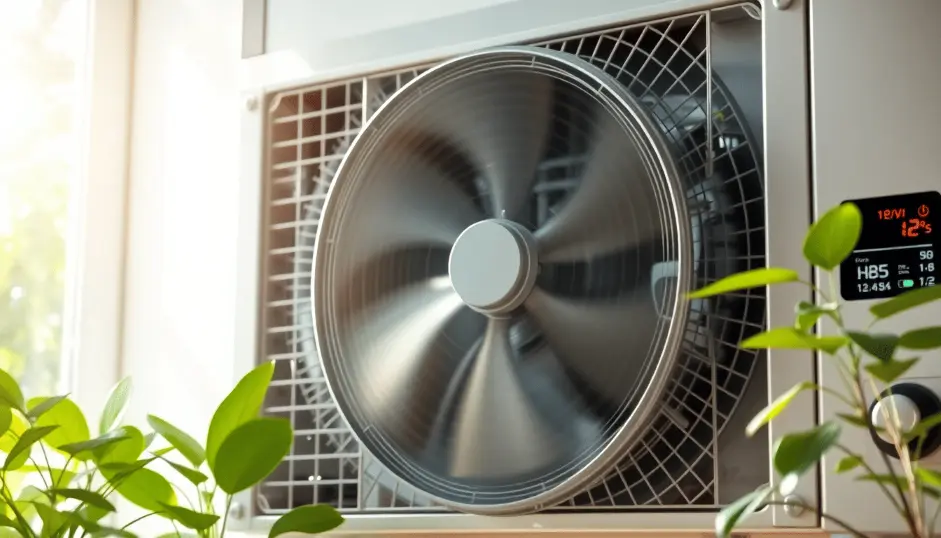If you’ve ever stood debating in front of your thermostat, finger hovering over the fan switch, you’re not alone. The “ON” versus “AUTO” dilemma is a common one for homeowners looking to optimize both comfort and energy bills. Last summer, during a particularly sweltering week, I decided to experiment with continuous fan operation in my two-story home. The results were surprising – and not entirely what I expected.
Key Factors Affecting Energy Savings
Before diving into whether continuous fan operation saves energy, it’s important to recognize that your mileage may vary. The potential savings (or additional costs) depend heavily on several key factors:
- Climate considerations: Homes in Arizona face different challenges than those in Florida or Michigan
- Home layout and insulation quality: Multi-level homes with temperature stratification issues behave differently than single-story, well-insulated spaces
- System age and motor type: The distinction between ECM (Electronically Commutated Motor) and PSC (Permanent Split Capacitor) motors is crucial to this discussion
Potential Benefits of Continuous Fan Operation
Temperature Regulation
One of the most noticeable benefits of leaving your fan running continuously is improved temperature consistency. My two-story home used to have a frustrating 6-7 degree difference between floors. When I switched to continuous fan operation, that difference narrowed to just 2-3 degrees.
This happens because the constantly moving air prevents thermal stratification – that annoying tendency for hot air to rise and cold air to sink. This benefit alone might justify the potential energy cost for homes with awkward layouts or multiple levels.
Air Quality Improvements
Beyond temperature, continuous fan operation keeps your air filtration system working around the clock. For allergy sufferers, this can be a game-changer. When your system runs continuously, the air is constantly cycling through your filter, removing dust, pollen, and other particulates that might otherwise settle in your home.
I’ve noticed significantly less dust accumulation on surfaces since running my fan continuously, and guests with allergies have commented on the improved air quality.
Mechanical Advantages
There’s a mechanical benefit to consider as well. Your HVAC motor experiences the most strain during startup. By reducing the frequency of these start-stop cycles, continuous operation can potentially extend motor life – though this advantage is offset by increased runtime hours.
This benefit is particularly notable for systems with ECM motors, which are designed for variable-speed operation and work most efficiently when allowed to run for extended periods.
Energy Consumption Realities
When It Might Save Energy
Contrary to what seems intuitive, there are specific scenarios where running your fan continuously can reduce overall energy consumption:
- Homes with ECM motors, which use up to 75% less electricity than traditional PSC motors
- During extreme temperature seasons when your system would be cycling frequently anyway
The key mechanism here is that a modern ECM motor running continuously at low speed may use less total energy than repeatedly powering up to full speed in AUTO mode.
When It Increases Costs
However, the energy-saving potential quickly evaporates under certain conditions:
- Older HVAC systems with PSC motors, draw significantly more power
- Extreme climate conditions where continuous air movement creates constant reheating or re-cooling demand
In my case, I discovered that continuous operation during mild spring and fall temperatures actually increased my energy bill by about $15 monthly – not insignificant over the course of a year.
Practical Implementation Strategies
Climate-Specific Recommendations
Your climate should heavily influence your fan operation strategy:
- In dry climates, continuous operation can help distribute humidity more evenly
- In humid regions, AUTO mode is generally preferable to prevent excess moisture circulation
Motor-Specific Guidance
| Motor Type | Continuous Use Recommendation |
|---|---|
| ECM | Generally suitable with monthly energy cost increase of $4-$8 |
| PSC | Limited use recommended due to 25-75% higher energy consumption |
Hybrid Solutions
Modern thermostats offer an excellent middle ground approach with “circulate” modes. These run your fan about 30% of each hour—enough to prevent stagnant air without the full energy impact of continuous operation. This has become my preferred setting during moderate-temperature seasons.
Maintenance Requirements
One often overlooked aspect of continuous fan operation is the increased maintenance burden. When your system runs continuously:
- Filters clog more quickly, requiring monthly rather than quarterly checks
- Motor bearings experience more wear, potentially requiring more frequent servicing
I’ve found setting calendar reminders for the first of each month helps ensure I don’t forget these more frequent maintenance checks.
Verdict: Energy Savings Potential
After six months of experimentation and tracking my energy bills, I’ve reached a nuanced conclusion: continuous fan operation rarely delivers significant energy savings in most residential settings. The increased electricity consumption of the fan motor itself typically outweighs the potential energy benefits.
However, comfort benefits and air quality improvements may justify the modest energy premium for many homeowners – particularly those with:
- ECM motors in their HVAC systems
- Multi-level homes with temperature stratification issues
- Household members with respiratory or allergy concerns
Key Takeaway: Continuous fan operation creates an energy efficiency paradox – potential savings exist but require precise system alignment and environmental conditions. Consider scheduling a professional HVAC assessment before making continuous operation your standard practice.
Ultimately, the most energy-efficient approach for most homeowners will be a seasonal hybrid strategy: AUTO mode during extreme temperatures and humidity, scheduled circulation during moderate seasons, and periodic continuous operation when air quality concerns arise. This balanced approach delivers the best of all worlds without unnecessary energy consumption.
Ready to Optimize Your HVAC System?
At Optimized Air Heating & Cooling, our certified technicians can analyze your specific home setup and recommend the ideal fan operation strategy for your unique needs. We’ll help you balance energy efficiency with comfort and air quality.
Schedule your personalized HVAC efficiency consultation today and receive a complimentary energy-saving guide customized to your system!
Call us: (224) 338-9591
Email: [email protected]
Mention code “SMARTFAN” for 15% off your next maintenance service!



